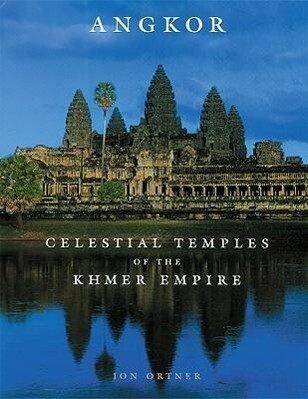
Zustellung: Fr, 08.08. - Do, 14.08.
Versand in 3-4 Wochen
VersandkostenfreiBuilt between the ninth and the thirteenth centuries by a succession of twelve Khmer kings, Angkor spreads over 120 square miles in Southeast Asia and includes scores of major architectural sites. In 802, when construction began on Angkor War, financed by wealth from rice and trade, Jayavarman II took the throne, initiating an unparalleled period of artistic and architectural achievement, exemplified in the fabled ruins of Angkor, center of the ancient empire. Among the amazing pyramid-and mandala-shaped shrines preserved in the jungles of Cambodia is Angkor Wat, the world's largest temple, an extraordinarily complex structure filled with iconographic detail and religious symbolism. Perhaps because of the decline of agricultural productivity and the expansion of the Thai Empire, Angkor was abandoned in the fifteenth century and left to the ravages of time. Today many countries are working to conserve and restore the temples, which have been inaccessible until recently. Now that the civil war has ended, Angkor is being reborn and is an increasingly popular tourist destination.Undaunted by the difficulties of traveling through Cambodia and eastern Thailand, Jon Ortner, accompanied by his wife, Martha, photographed fifty of the most important and unique monuments of the Khmer Empire. His images include spectacular views from the rooftops of its temples, glorious landscapes, and details of inscriptions and art that few have ever seen. Beautifully reproduced in Angkor, the photographs are accompanied by a fascinating text written by a team of experts, providing historical, architectural, and religious analyses of Angkor and the Khmer civilization. The appendix includes a glossary, achronology of construction, and a chart of the kings and their accomplishments. Black-and-white floor plans and historic watercolors complete this breathtaking tribute.
Inhaltsverzeichnis
Introduction by Jon Ortner History, Culture, Religion, and Cosmology by Ian Mabbett: Angkor Wat Calendrical Significance of Angor Wat by Eleanor Mannikka Phnom Bakheng - Baksel Chamkrong - Angkor Thom: Bayon - Angkor Thom: South Gopura & Causeway; Gopura - Victory Gate East; East Tower and Gate (Gate of Death); Moat; Elephant Terrace; Royal Terrace; Baphuon; Royal Enclosure: Phimeanakas; Prah Palilay; Tep Pranam; Prah Pithu Group; Prasat Suor Prat; North Kleang and South Kleang - Chou Seh Tevoda - Thommanon - Keo - Ta Nel Architecture and Conservation by John Sanday: Ta Prohm - Banteay Kdel - Sra Srang - Prasat Kravan - Preah Khan - Neak Pean - Ta Som Hydrology by John Goodman: East Mebon - Western Baray (West Mebom) - Pre Rup - Banteay Srei - Banteay Samre - Roluos: Bakong - Roluos: Preah Ko - Roluos: Lolei - Phnom Krom - Tonle Sap Lake & floating villages - Beng Mealea - Kbal Spean - Phnom Kulen - Issan Thailand: Prasat Phnom Rung; Prasat Phimai; Muang Tam; Prasat Sikhoraphum - Preah Vihear Afterword: Preservation of the Cultural Heritage by Kerya Chau Sun
Produktdetails
Erscheinungsdatum
15. April 2002
Sprache
englisch
Seitenanzahl
300
Autor/Autorin
Jon Ortner, Ian W. Mabbett
Verlag/Hersteller
Produktart
gebunden
Gewicht
2953 g
Größe (L/B/H)
337/273/40 mm
ISBN
9780789207180
Entdecken Sie mehr
Bewertungen
0 Bewertungen
Es wurden noch keine Bewertungen abgegeben. Schreiben Sie die erste Bewertung zu "Angkor: Celestial Temples of the Khmer Empire" und helfen Sie damit anderen bei der Kaufentscheidung.








